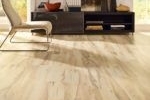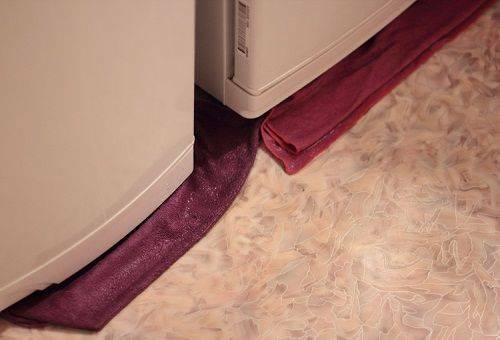Interior designers are constantly experimenting with different materials, finding new uses for them. So, for example, laminated board, which was previously used exclusively as a flooring, began to be used for interior walls. This solution allowed expanding the possibilities of designers in creating original design ideas. In today's HouseChief review, experts will talk about the use of laminate on the wall in the interior, and the photos will serve as a clear example of the benefits of this method of finishing.
Read in the article
- 1 Laminate used for wall decoration
- 2 Pros and cons of wall lamination
- 3 What class and color laminated board is suitable for wall decoration
- 4 Methods for laying laminate on the wall
- 4.1 Horizontal placement
- 4.2 Vertical way
- 4.3 Diagonal styling
- 5 Installation of laminate on the wall: the main nuances of laying
- 6 Laminate on the wall: fastening methods
- 6.1 How to attach laminate to the wall with glue
- 6.2 How to lay a laminate on a wall with a lathing from a bar
- 6.3 How to lay laminate flooring on a wall with metal sheathing
- 7 Wall decoration with laminate with photo of interior design
- 7.1 Laminate wall decoration in the hallway
- 7.2 Laminate in the interior of the living room
- 7.3 Finishing the wall of the children's room with laminate
- 7.4 Laminate on the wall in the interior of the kitchen: photos of interesting ideas
- 7.5 Laminate on the wall in the interior of the bedroom
- 7.6 Laminate on the wall in the bathroom
- 8 A few words in conclusion
Laminate used for wall decoration
For finishing the surface of the walls, the same laminated board is used as for floor covering. Since the load on the material mounted on vertical surfaces is insignificant, a laminate with a minimum thickness and level of wear resistance is suitable. The optimal wear resistance class of this coating for laying on a wall is 21, 22, 23.
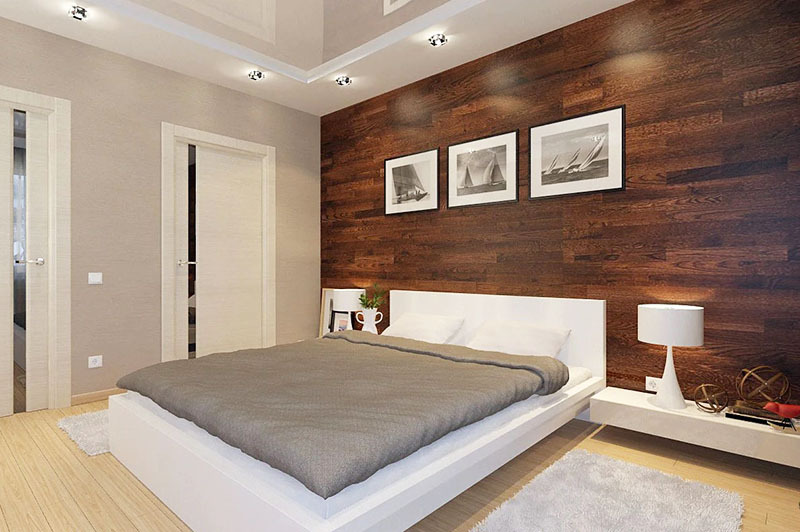
Ease of installation is ensured by two types of lock connection: click and tongue-and-groove. In the first case, the laminate can be mounted on a finished wooden lathing or flat surface using a special glue. Laminated panels with tongue-and-groove or Lock type are fixed to the wooden frame by means of small nails or staples.

Related article:
Which is better to choose a laminate for an apartment: features of coatings and options for use. Which laminate is the best in quality for different rooms of the apartment: important selection criteria for specific operating conditions, Which is better to choose a laminate for an apartment in appearance: available solutions - read in publications.
Pros and cons of wall lamination
There are advantages to using laminated board for wall cladding. Here are just a few of them:
- thanks to the large selection of textures, colors and imitations of natural precious woods, you can create original interiors. In addition, there is an opportunity to use the favorite technique of designers - creating smooth transitions from walls to floor;
- laminate is referred to as budget finishing materials. It is possible to purchase inexpensive and thin panels, since they will not be heavily loaded;
- ease of installation of laminate on the wall, which a person can cope with even without experience in construction and finishing work;
- practicality, durability and long service life (over 10 years);
- moisture resistance and shock resistance of some models allows them to be used in rooms with different levels of humidity;
- wall decoration with a laminated board allows you to improve the heat and sound insulation characteristics of the room;
- antistatic and easy surface maintenance;
- the laminate meets all safety requirements and is considered environmentally friendly.
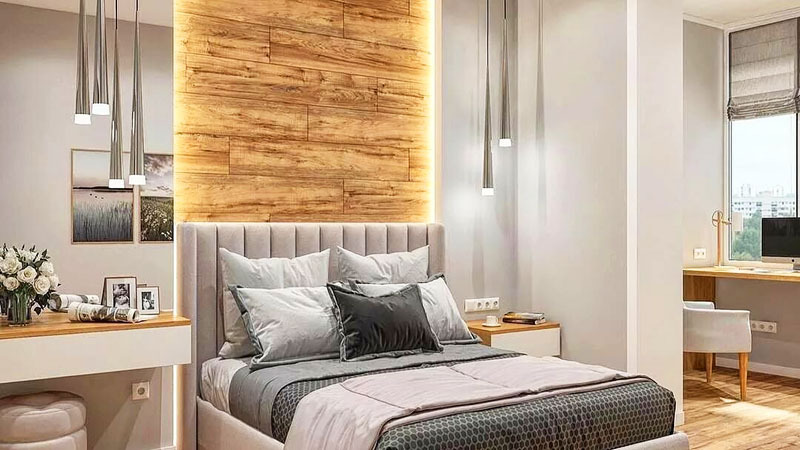
Laminate has many advantages as a finishing material for walls, but it is necessary to mention the fly in the ointment in this barrel of honey. Not all models have sufficient moisture resistance. In addition, it is not recommended to trim all four walls in the room with a laminated board, since this will not reflect in the best way on the appearance of the room and can only spoil the interior. This material is more suitable for highlighting functional areas.
What class and color laminated board is suitable for wall decoration
When choosing laminated panels for wall decoration, you must, first of all, take into account the strength characteristics and color scheme. To design vertical surfaces, it is not necessary to purchase a material with the highest strength class (33-34). Since there will not be large loads on the lamellas, panels with a strength class of 21-31 are quite suitable.

According to the color scheme, the laminated board is conventionally divided into two groups: warm and cold. You can choose a color to match the walls and furniture, or play in contrast, depending on the interior design. It is also important to remember that the laminate should be in harmony with the main decoration of the room:
- the wall covering should be at least one tone lighter than the floor covering;
- if one surface is decorated with a dark board, then it is better to make the rest of the walls light and monochromatic;
- an interesting effect can be achieved by finishing the floor and wall with a laminate of the same color.
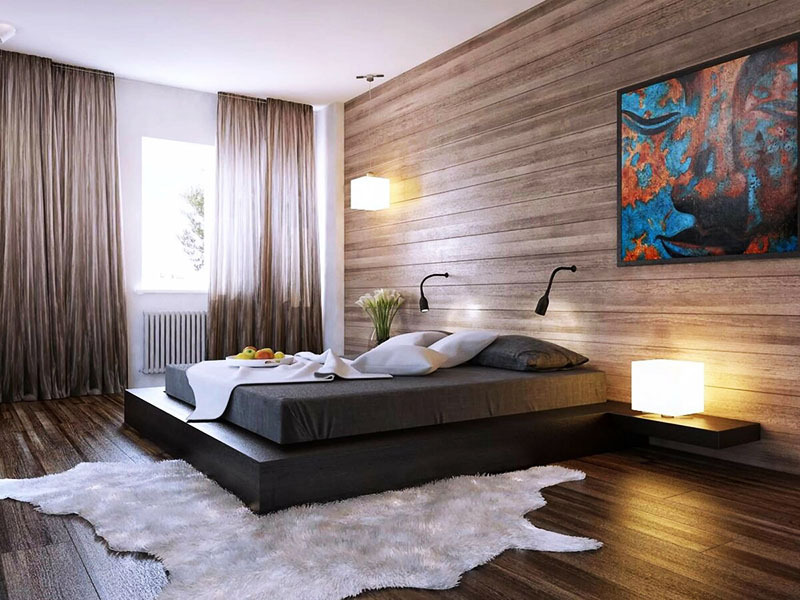

A comment
Mikhail Starostin
Head of the team of the repair and construction company "Dom Premium"
“When buying laminate, make sure that the lot numbers on the packages match. Only in this way can you get a board of one shade. "
Methods for laying laminate on the wall
It is impractical to finish all walls in the room with a laminate, even if you use lamellas with different textures and shades. It is best to focus on a specific area, giving the interior a great deal of originality. The layout of the laminate on the wall depends on the texture, color of the lamellas and the designer's idea. The boards can be mounted horizontally, vertically or diagonally.
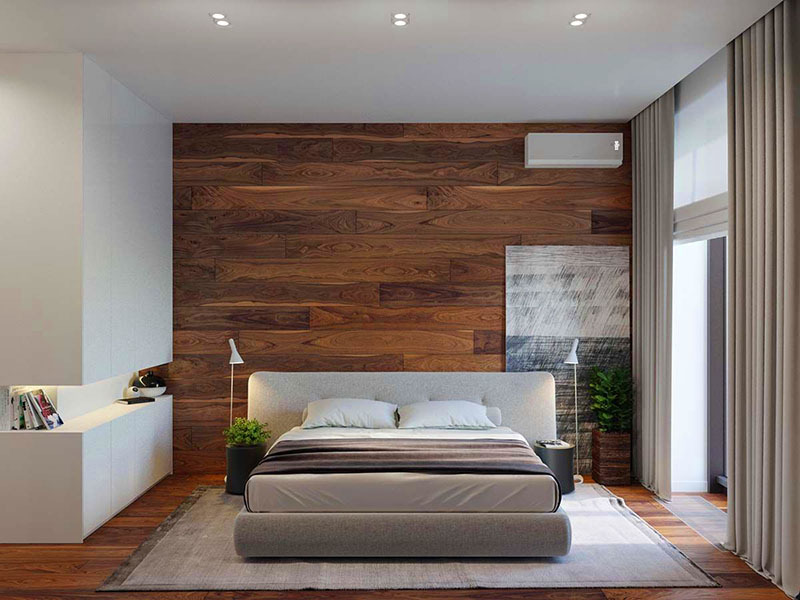
Horizontal placement
The horizontal method of laying laminate on the wall is the most common and simplest. It is often used to decorate small spaces, as it visually expands the space. However, this technique works in the case when the height of the walls is at least 3 m.If the room is not high, but the horizontal way of laying the lamellas is chosen, then you should not finish the laminate until the very ceiling.
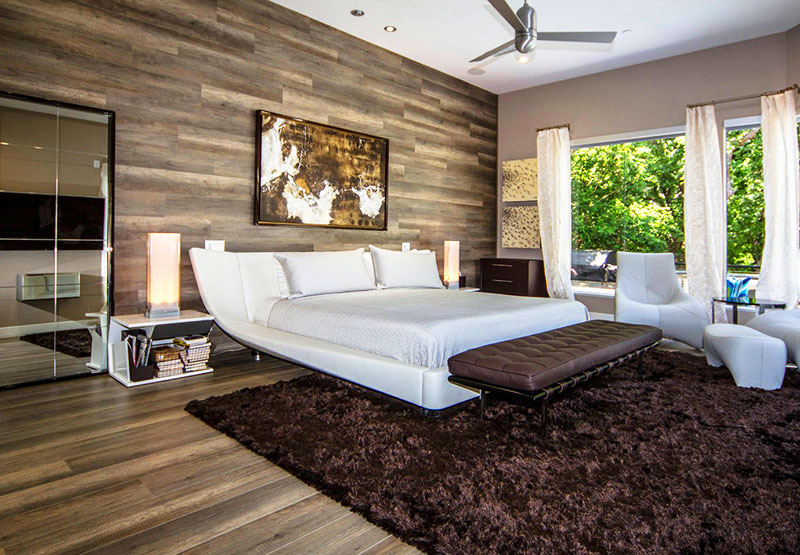
Vertical way
This is a great option for laying laminate boards in a room with low ceilings. Vertical stripes, be it wallpaper, paint or laminate, visually increase the height of the room.
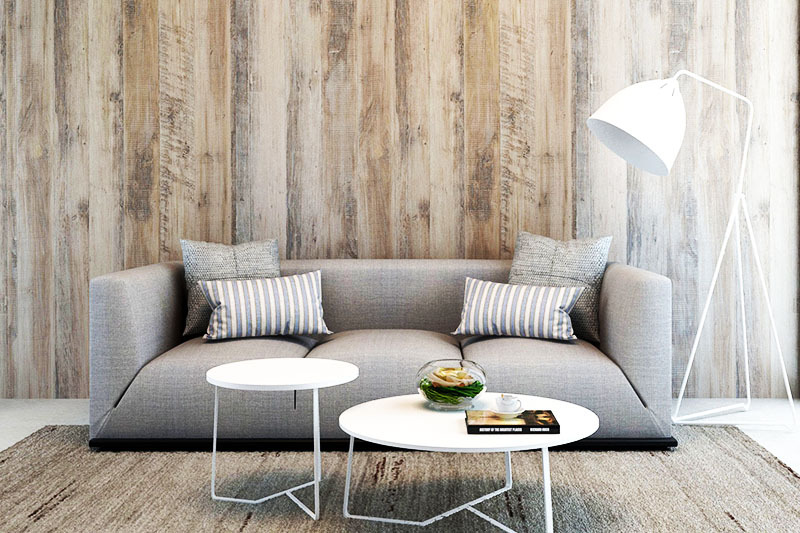
Diagonal styling
This method of laying laminate flooring is not very popular due to the complexity of installation. Lamellas need to be cut at a certain angle, which increases material consumption. In addition, skill and extensive experience in such work is required from the stacker. However, the appearance of a wall finished in this way is very stylish and effective.
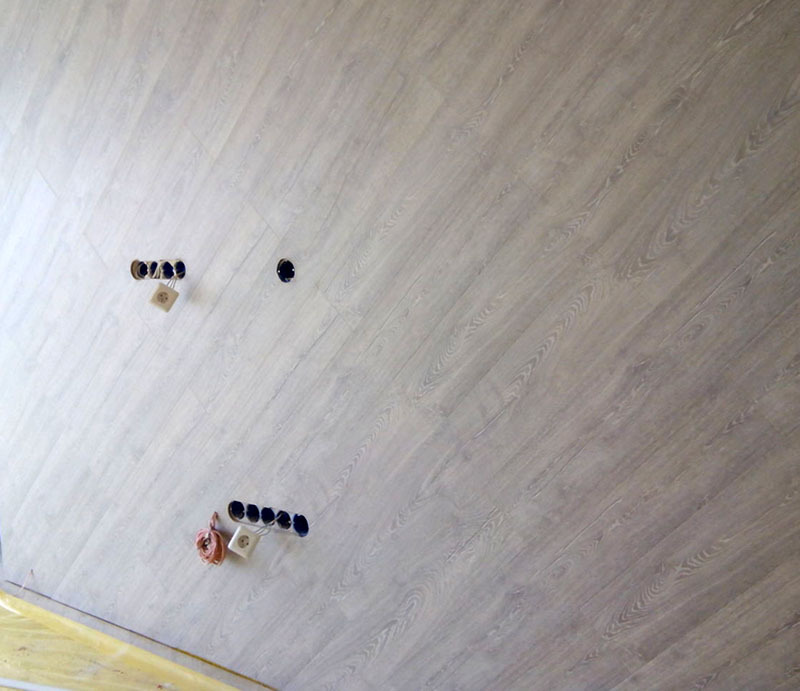
Installation of laminate on the wall: the main nuances of laying
If you decide to use a laminated board for wall decoration, you need to take into account some of the nuances of working with this material. By following the simple recommendations of experienced craftsmen, you can bring originality and uniqueness to the interior.
- When choosing a laminate and how to mount it on the wall, you need to take into account the footage of the vertical surface. If the area is small, then you can choose an adhesive mounting option, and for large surfaces it is best to make a crate from a wooden bar or a metal profile. The last option is more reliable.
- Metal or wooden lathing does not need to level the walls. In addition, the design provides for the possibility of filling the space between the wall and the laminate with insulation.
- When creating the lathing, the distance between the slats should be within 200-500 mm. Some specialty stores sell prefabricated frames in different sizes.
- Adhesive installation of the laminate on the walls is easier and faster, but the surfaces must be perfectly flat, clean and dry.
- There should be a distance of about 10 mm between the ends of the laminate board and the perpendicular wall, as well as the floor. To maintain such a gap, special wedges or board trimming are used.
- When installing the laminated board horizontally on the wall, it is necessary to observe the staggered stacking order or shift the top row by a third.
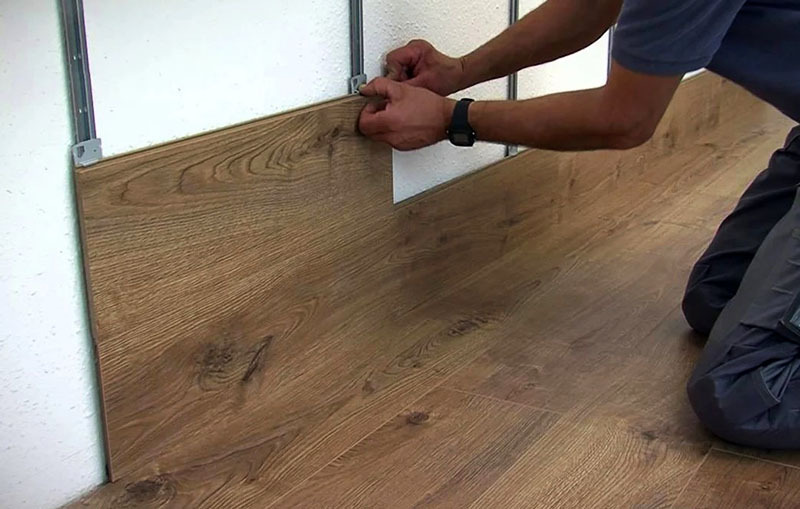
Important! Packs with laminated boards must be brought into the room where they will be mounted, unpacked and left for 2 days for acclimatization.
Laminate on the wall: fastening methods
In order for the wall decoration to be beautiful and durable, a perfectly flat surface is needed. However, in some cases this is not required. It all depends on the installation method. For example, a laminated board can be installed with glue directly on the subfloor or on metal or wood battens.
How to attach laminate to the wall with glue
Before gluing the laminate to the wall, it is imperative to level the surface, clean it from dirt and dry it. If this is not done, then gaps will form and the service life of the coating will be significantly reduced. This installation does not require special knowledge and skills, so you can do it yourself and alone. Any kind of laminate can be installed with glue.
Many people wonder how to glue the laminate on the wall. For this, silicone-based glue or "liquid nails" are most often used. Installation consists of several stages:
- The prepared wall is measured and, if necessary, the board is trimmed.
- An adhesive composition is applied to the back side of the laminate (in a zigzag, pointwise or along the perimeter of the lamella).
- The canvas is installed on special wedges and is firmly pressed against the wall. With the help of a building level, the ideal horizontal lamella is checked and, if necessary, the position of the board is corrected.
- During the installation process, it is necessary to wipe off the glue protruding between the seams, especially if the lock joint is additionally glued.
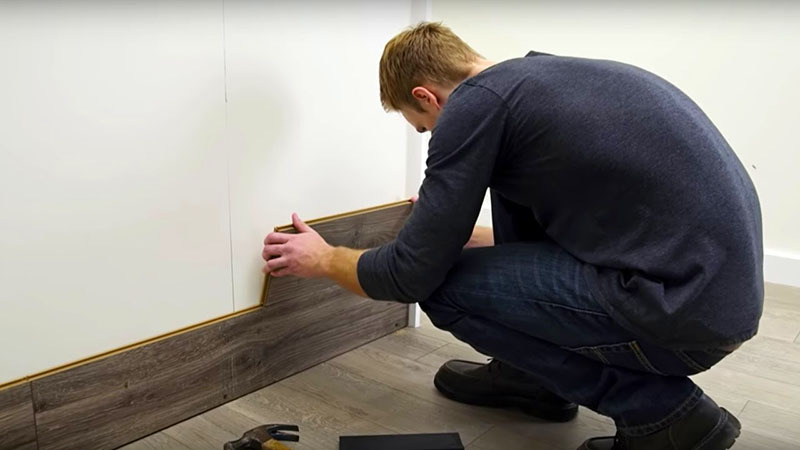
On a note! Some craftsmen prefer to assemble a shield from laminated boards on the floor and only then stick it on the wall.
How to lay a laminate on a wall with a lathing from a bar
If the leveling of the walls is too costly, then it is worth choosing a method of installing the laminate on a metal or wooden crate. However, in this case, an adhesive laminate board will not work. When installing on a lathing, lamellae with a tongue-and-groove or clicked lock connection are chosen. It is also worth saying that this method is not recommended for small rooms, since the construction for the laminate will reduce the already modest area.
The tongue-and-groove laminate is laid only on a wooden lathing installed on the wall. Liquid nails, staples or small nails can be used to fix the lamellas. The lock connection will ensure reliable adhesion of the boards to each other. The installation process is similar to the installation of plastic lining.
First, side rails are attached to the wall, and the rest are evenly distributed between them, not forgetting that the distance between them should be no more than 500 mm. When the lathing is ready, you can start laying the laminate with glue, staples or nails. The staples and nails must fit tightly into the material so that the lock of the next lamella will fit without any problems.


A comment
Mikhail Starostin
Head of the team of the repair and construction company "Dom Premium"
“If necessary, the space between the slats can be filled with mineral wool or polypropylene foam. This will improve the sound and heat insulation of the room. "
How to lay laminate flooring on a wall with metal sheathing
This method of fixing the laminate to the wall is almost identical to the previous one. The main and only difference is that not a wooden beam is used to create the lathing, but a galvanized metal profile for drywall. As in the case of wooden lathing, the structure can be insulated. The fastening of the laminate to the metal profile is carried out using glue, clamps or self-tapping screws. As a frame, you can use and metal profile for drywall.
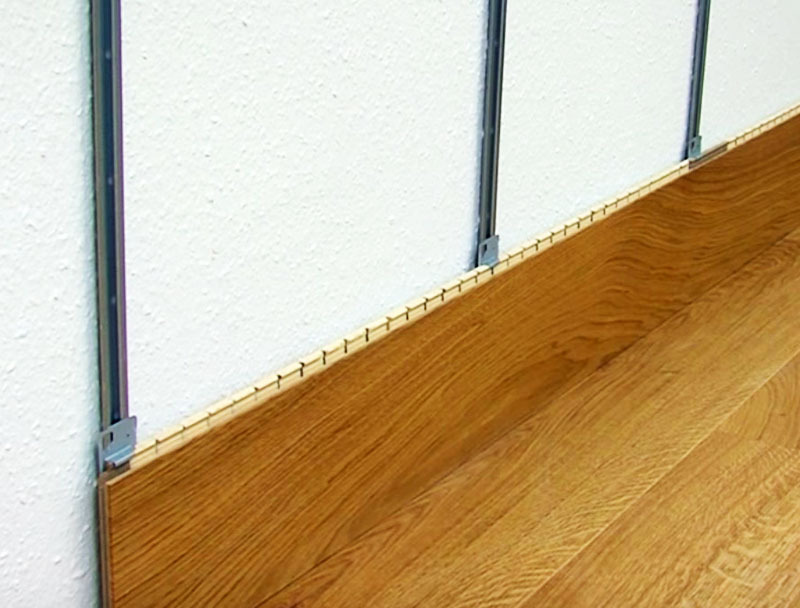
Wall decoration with laminate with photo of interior design
The use of laminate in the interior opens up great opportunities for designers. A wide range of imitations of wood texture allows you to use laminated board to create almost any style: from classic to ethnic and even techno. Each room has a different laminate finish.
Laminate wall decoration in the hallway
Laying laminate boards on the walls in the hallway allows you to create a harmonious and original composition, especially if it is combined with the flooring. In a spacious room, the combination of wall laminate with textured wallpaper, imitation of brick or masonry is interesting. In a small and narrow corridor, the sheathing of the lower part of the wall will allow you to visually correct the geometry of the room.

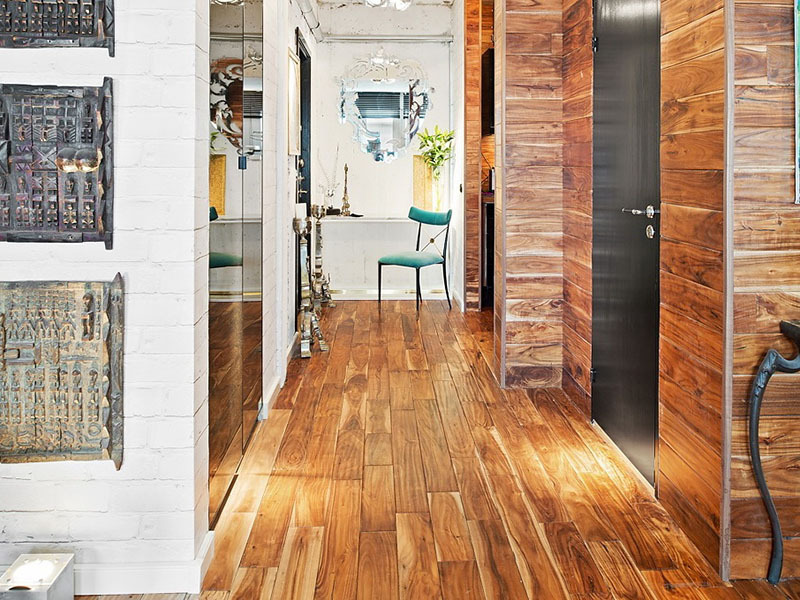
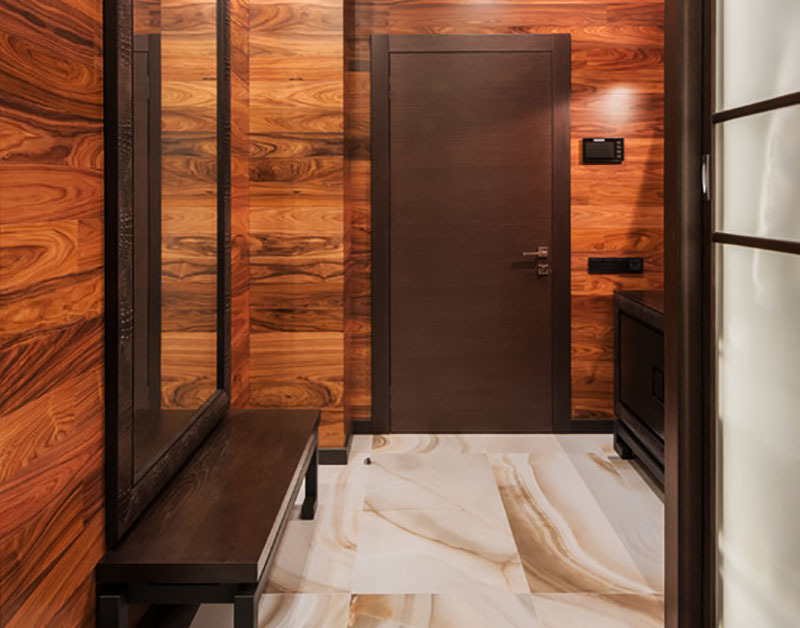
Laminate in the interior of the living room
An excellent option for using laminate to decorate the wall in the living room - decorating the TV area, near a large aquarium or fireplace. You can also sheathe the corner where the sofa or work sector is located with a laminated board. A material with an imitation of natural raw wood with a rough texture will look great in a loft or grunge style.
Laminate board imitating precious woods will look great in classic interiors and their varieties. It is an excellent material for decorating niches and arches with a simple configuration. Correctly selected texture and direction of the boards during installation will visually expand the space or increase the height of the walls. See how the laminate on the wall looks in the photo in the interior of the living room.
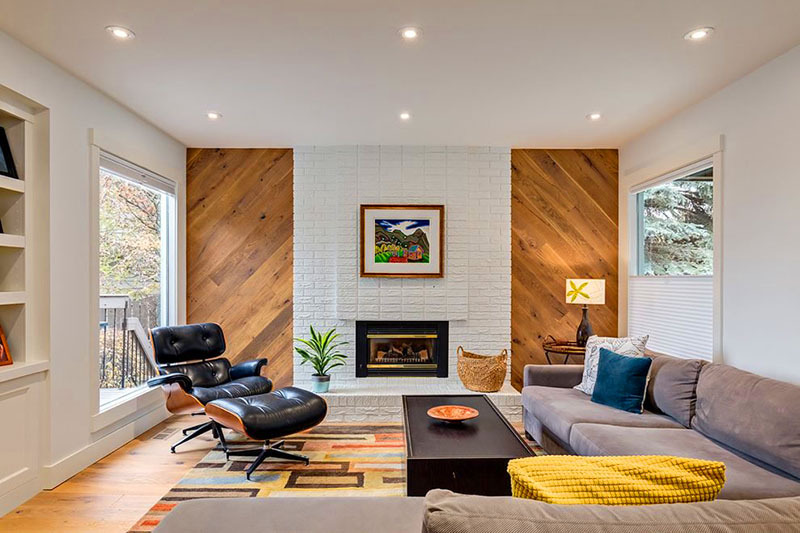
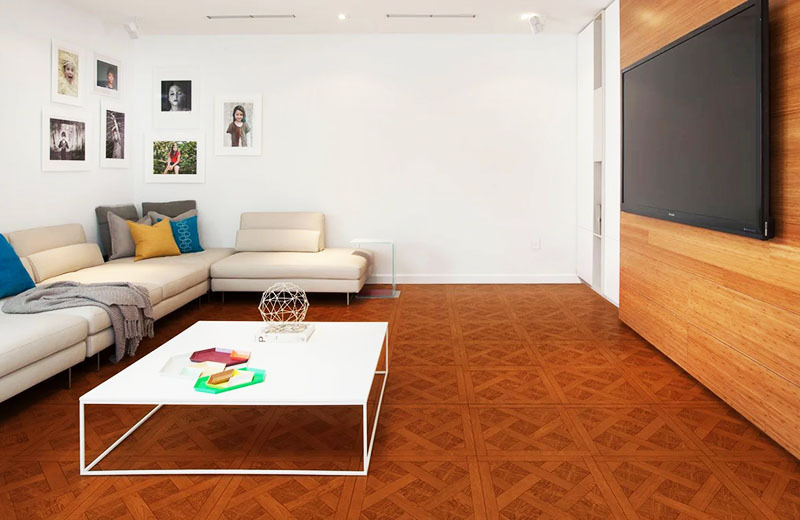
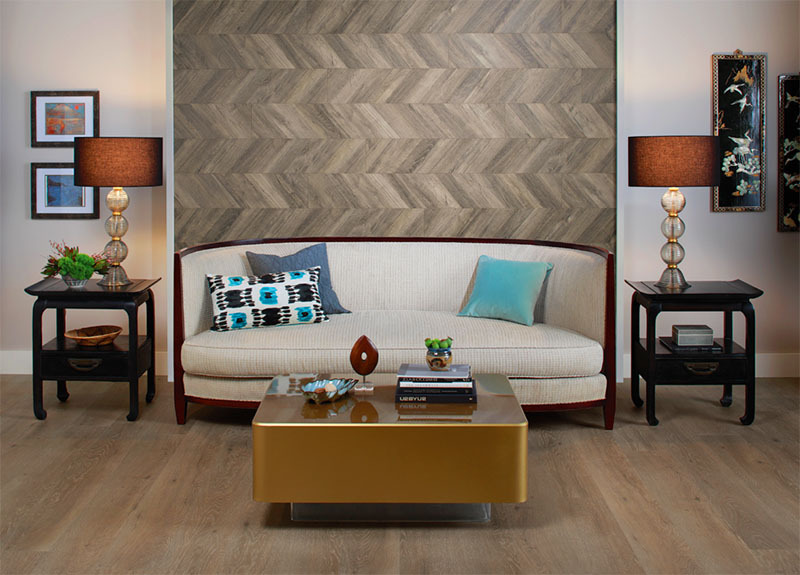
Finishing the wall of the children's room with laminate
Walls covered with laminate look very stylish and beautiful in the interior of a children's room. It is important to think over the texture of the material and the color scheme so that the room does not look gloomy. The child's room should be light, bright, conducive to positive. Modern designers recommend combining laminate sheathing with bright wallpaper, as well as alternating dark sections of the wall with light inserts.
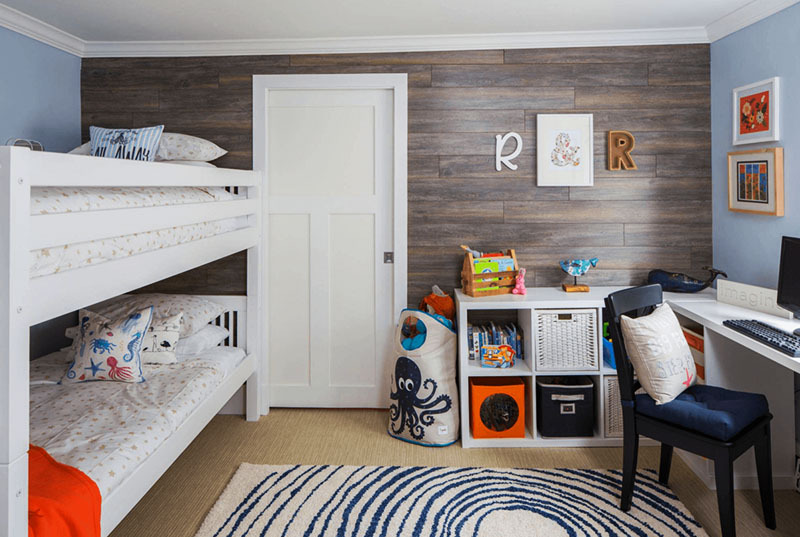
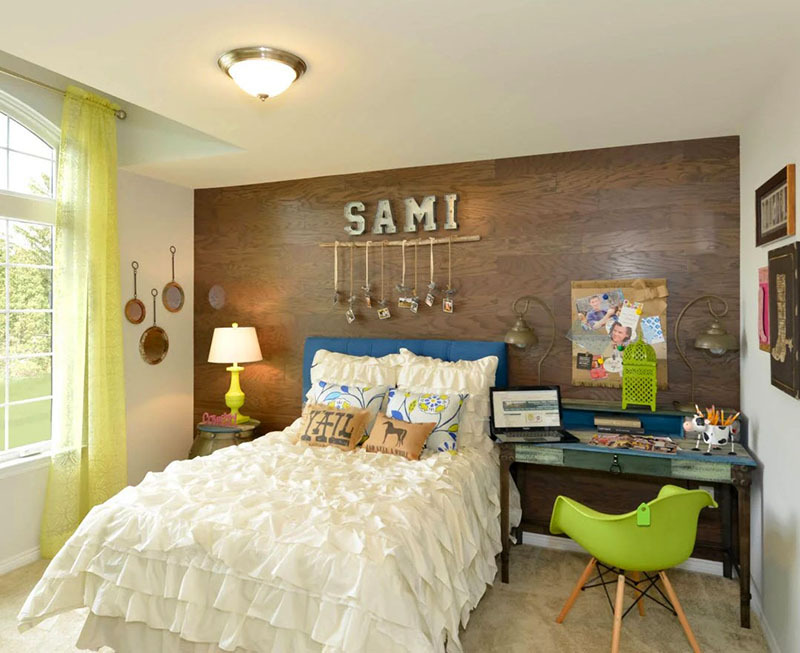
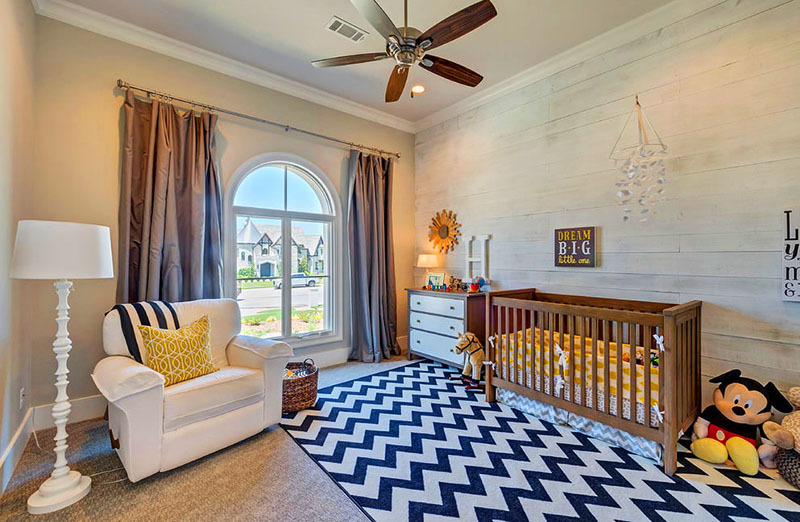
Laminate on the wall in the interior of the kitchen: photos of interesting ideas
For laminate finishing of kitchen walls, you need to choose the material with the highest strength characteristics. Also, it must have good moisture resistance and heat resistance, since this is a room where there is high humidity and temperature changes are frequent. If you decide to use a laminate board to decorate the walls in the kitchen, you need to take care of the device powerful hood. This material is a great option for zoning. bar counter or dining area.

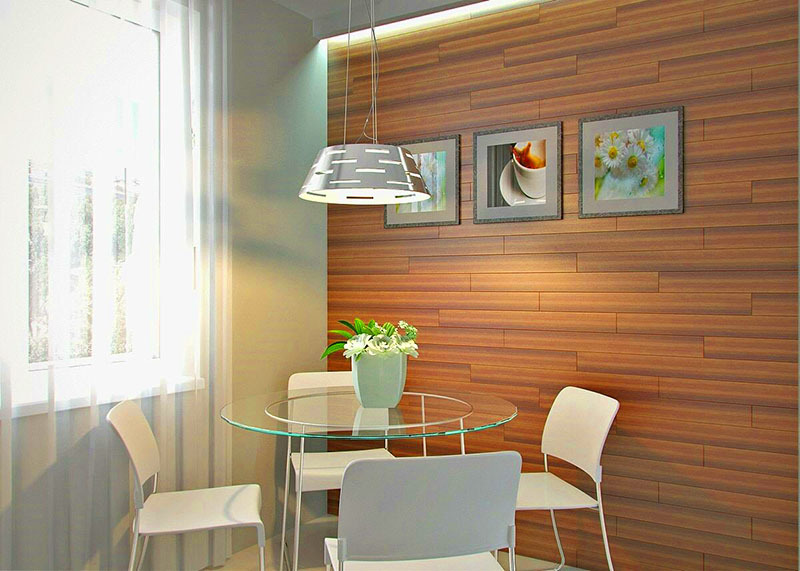

Laminate on the wall in the interior of the bedroom
Laminate in the interior of the bedroom is most often used to decorate the wall at the head of the bed. You can veneer the entire surface or select only one area. Photos or sconces can be placed on the laminated board. The laminate looks original, smoothly rolling from floor to wall.
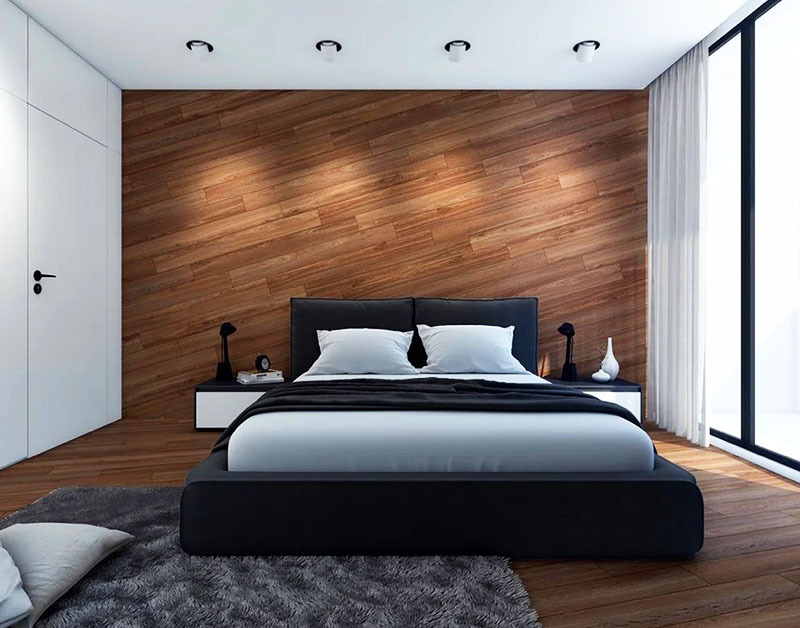
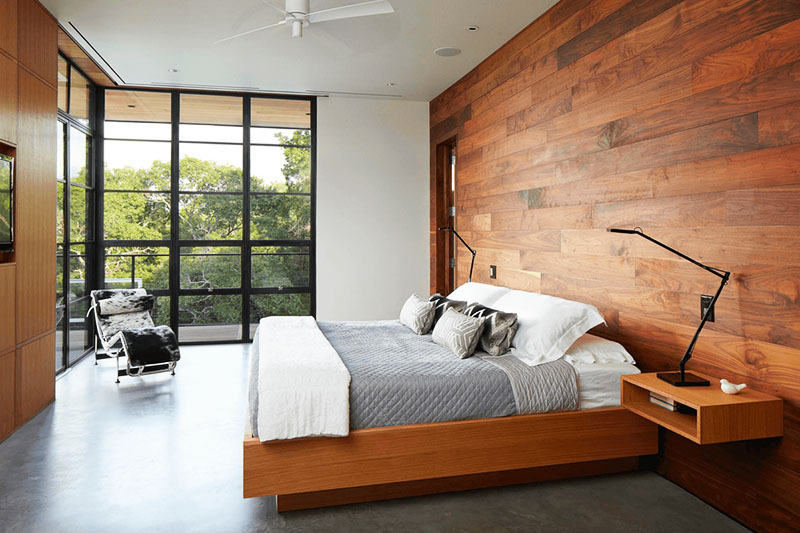
Laminate on the wall in the bathroom
A bathroom is a room in which almost any finishing material is subjected to extreme stress. There is very high humidity, steam and constant temperature fluctuations. To decorate the walls with laminate in the bathroom, you will need lamellas with the highest strength class. Preference is given to a waterproof, rather than moisture-resistant laminate board, which will last quite a long time and will allow you to create a unique interior.
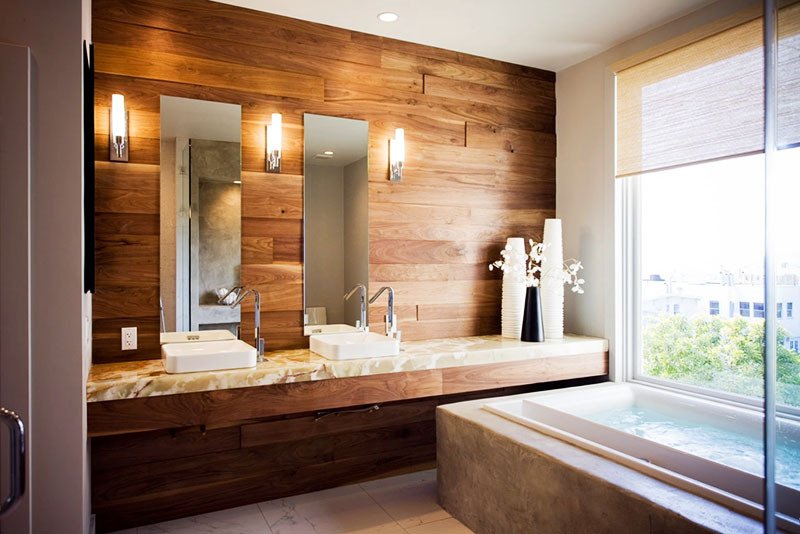

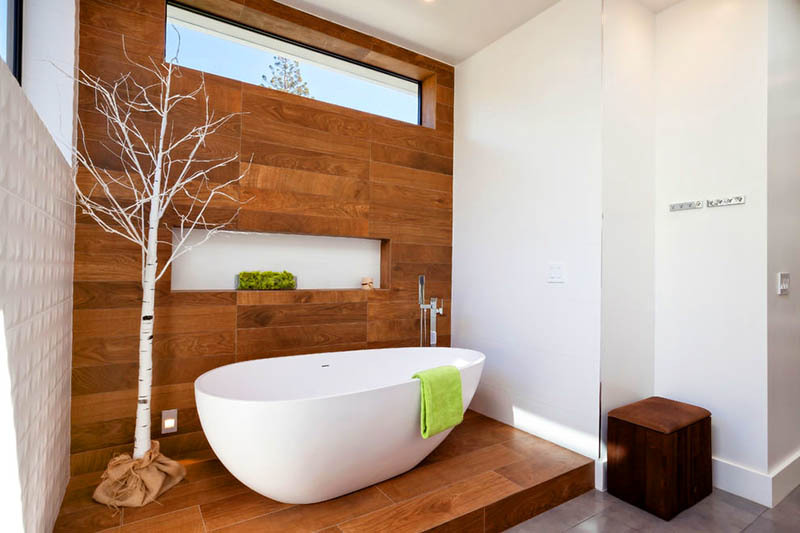
A few words in conclusion
As you can see, laminated board is an excellent material not only for flooring, but also for finishing wall surfaces. A wide selection of colors and textures imitating natural wood, stone or metal, allows you to create original interiors in any style. We hope our article was interesting and useful for you. Be sure to rate it, express your opinion or share with your friends.

